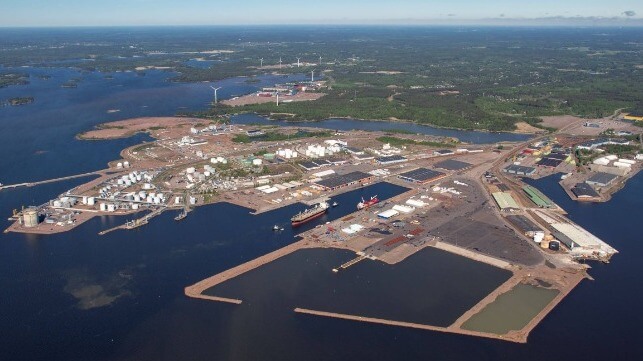Project to Turn Sewage and Wastewater from Cargo Ships into Biogas

The seaport of HaminaKotka located on the Gulf of Finland has launched an innovative demonstration project that will convert sewage and wastewater from commercial ships operating in the Baltic into biogas. While the project is currently voluntary, the hope is that it will serve as a model for other ports and will contribute to efforts to clean the Baltic, which is among the most polluted bodies of water in the world.
“We can achieve our objective of a cleaner Baltic Sea, one ship, one port and one country at a time,” says Elisa Mikkolainen, Project Director of the Baltic Sea Action Group. An NGO dedicated to cleaning the waterways. “The nutrient load on the sea decreases every time wastewater is discharged at the port. We need extensive cooperation to succeed in our mission.”
Approximately 2,000 ships are operating in the Baltic Sea at any given moment, the group explains, and 95 percent of them are cargo ships. They estimate that those ships have approximately 25,000 seafarers aboard producing tons of sewage and wastewater from their daily operations.
Currently, despite the increasing regulations on ballast water, there are no regulations to prevent these ships from discharging waste into the Baltic. It is legal to discharge greywater, sewage, and ground food waste into the Baltic. Passenger ships, such as the ferries operating between Finland, Sweden, and Estonia, however, have been voluntarily for the past several years been discharging their wastewater at the port. Starting this year, IMO regulations also prohibit discharges of untreated sewage from passenger ships in the Baltic Sea.
The wastewater being discharged by the ships includes food waste and contains, for example, nutrients, bacteria, fats, chemicals, and microplastics. The NGO highlights that these elements are accelerating two of the worst problems of the Baltic Sea: eutrophication and oxygen depletion.
The Baltic Sea Action Group’s two-year program for the management of maritime greywater, which was supported through funding from the European Maritime and Fisheries Fund’s Finnish Operational Program, sought to develop processes to make it simple for all vessels to stop discharges. According to the group, all discharge into the sea is unnecessary and all waste from ships should be discharged at the port and recovered. The new voluntary measures they believe will lead the way for responsible operators both on land and at sea.
The port of HaminaKotka is the first location to participate. The water management company in the region, Kymen Vesi, treats the sewage discharged by cargo ships at the port and is sampling the water to develop further data for the project. The wastewater sludge created in the process is refined into renewable energy at Gasum’s biogas plant and will be used as a fuel for trucks.
“The port of HaminaKotka is the largest general port in Finland, visited by approximately 2,500 cargo ships every year. We want to encourage the ships to discharge their wastewater at the port. Our sewage reception and treatment facilities meet the requirements of the circular economy,” says Suvi-Tuuli Lappalainen, Development Manager at the Port of HaminaKotka.
A broad range of shipping companies, including Stolt Tankers and Maersk, along with shipping agencies have agreed to participate in the program.
